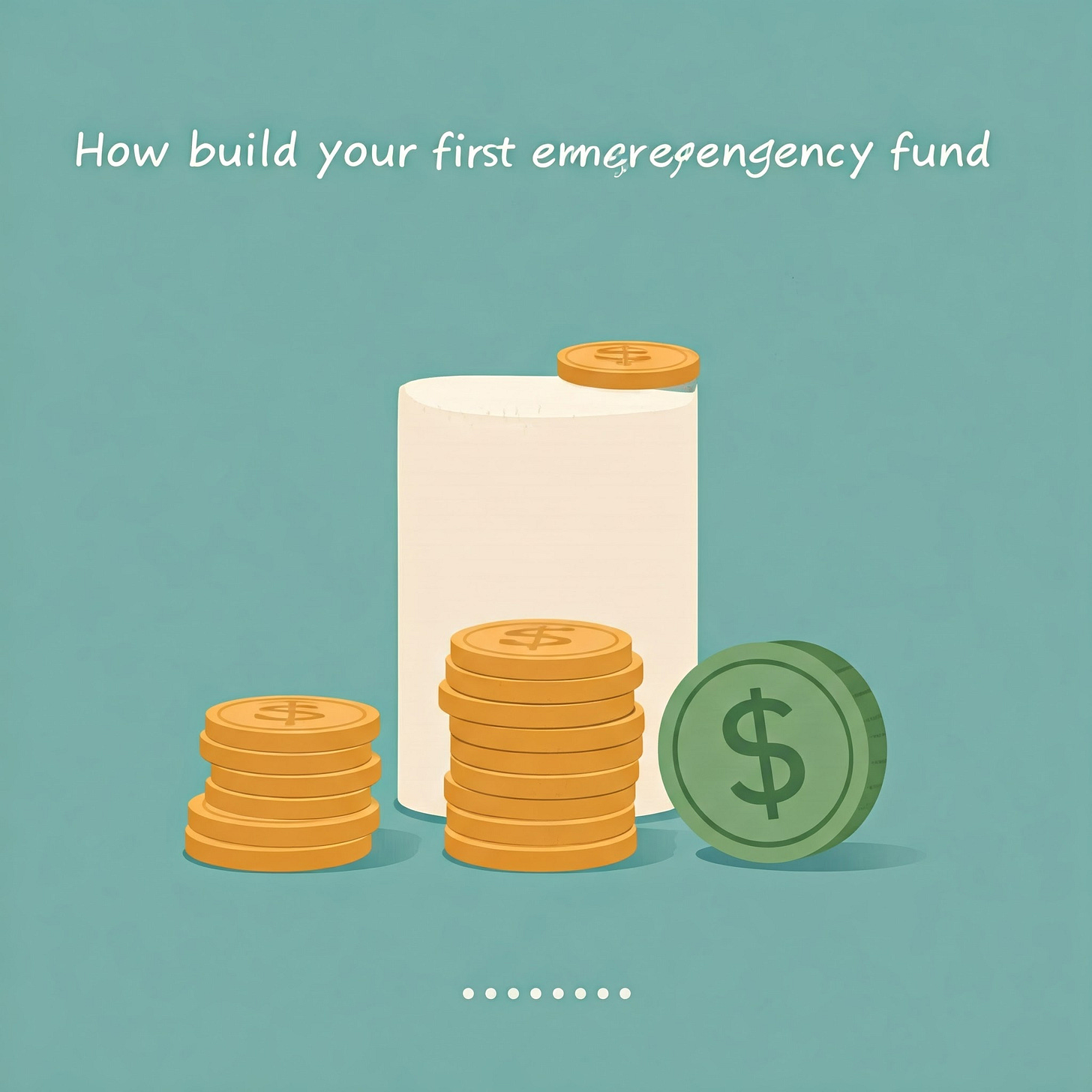How to Build Your First Emergency Fund?
a step-by-step guide
Happy Wednesday! We’re halfway through the week. Take a moment to reflect on what’s been achieved and look ahead to what’s still possible. Keep pushing forward; the week isn’t over yet.
But before we start, here’s a dose of positivity for you:
‘The best way to predict your future is to create it’
Now, let’s get started…
Let’s build your financial safety net
Life is unpredictable, whether it’s an unexpected medical expense, a car repair, or an emergency job loss, having an emergency fund can be a game-changer. It’s the financial safety net that cushions you from life's surprises.
This step-by-step guide will walk you through everything you need to know to create, grow, and protect your first emergency fund.
Step 1: Understand the importance of an emergency fund
Before diving into the numbers, it’s essential to understand why an emergency fund is necessary. Think of it as your financial cushion - there to protect you from unexpected financial shocks.
Without one, you could end up relying on credit cards, loans or dipping into your long-term savings. Over time, that can lead to debt spirals and financial stress.
An emergency fund is there to cover the essentials:
Unforeseen medical expenses
Car repairs
Home repairs
Job loss
Any other unplanned costs
It’s not for buying the latest gadget, a vacation, or treating yourself to a night out.
Step 2: Set a clear goal for your emergency fund
The first step to building your emergency fund is setting a clear goal. Most experts recommend saving enough to cover three to six months of living expenses. This amount provides a cushion for significant life disruptions.
However, the exact amount can vary based on your lifestyle and circumstances. For example, if you have a stable job and no dependents, you might be comfortable with three months’ worth of expenses. If you're self-employed or have a family, you may prefer six months.
How to Calculate Your Emergency Fund Target:
List your monthly expenses: Write down all essential expenses—rent, utilities, food, transportation, insurance, and debt payments.
Multiply by 3 to 6 months: This gives you your target emergency fund range.
Example:
If your monthly expenses total ₹50,000, your emergency fund goal would range from ₹1.5 lakh to ₹3 lakh.
Step 3: Start small, But start now
Starting an emergency fund doesn’t require a large upfront investment. Start small—even saving ₹1,000 a month will build over time. It’s crucial to develop the habit of saving, no matter the amount. Once you’re comfortable with this, you can increase your savings each month.
Here are some simple tips to help you kickstart the process:
Automate your savings: Set up an automatic transfer from your checking account to your emergency fund every payday. Automating this process helps you stay consistent.
Cut non-essential expenses: Identify areas where you can trim your spending, like dining out less, canceling unused subscriptions, or limiting impulse purchases.
Windfall savings: Any bonuses, tax refunds, or gifts you receive can go straight into your emergency fund.
Step 4: Choose the right account for your fund
Your emergency fund needs to be easily accessible but also separate from your regular spending account. Here are your best options:
High-interest savings account: This is one of the best places to keep your emergency fund because it offers liquidity and earns a little interest over time.
Money market account: Similar to a savings account, but it often offers slightly higher interest rates.
Liquid mutual funds: These are relatively safe investment options that offer better returns than savings accounts but still allow you to access your money quickly.
Avoid putting your emergency fund in stocks or long-term investments where you might face penalties or have difficulty accessing the money when you need it.
Step 5: Build your fund gradually
Rome wasn’t built in a day, and neither is an emergency fund. Stay patient and focus on gradual growth. As your emergency fund balance grows, you can use the following strategies to boost your savings:
Review your budget monthly: Look for areas to cut back on and redirect that money to your emergency fund.
Use windfalls for savings: Tax returns, bonuses, or even a side hustle income can help build your fund faster.
Cut back on debt payments: If you have high-interest debt (like credit card debt), pay it off first. Once it’s gone, redirect that money into your emergency fund.
Step 6: Protect your emergency fund
Once your emergency fund is growing, it’s essential to protect it. This is not a fund for spontaneous purchases, so keep it off-limits unless there's a true emergency.
To safeguard your fund:
Set a withdrawal rule: Only dip into the fund for emergencies—unforeseen expenses like medical bills, car breakdowns, or temporary loss of income.
Track your progress: Regularly check the balance to ensure you're on track. Seeing your fund grow can be motivating!
Don’t ‘borrow’ from the fund: If you take money out, commit to replenishing it as soon as possible.
Step 7: Reevaluate and adjust as needed
Once you’ve hit your target fund size, you may find you need to adjust it over time. Consider increasing your emergency fund if:
Your living expenses increase.
You have dependents or new financial responsibilities.
Your income becomes more volatile or uncertain.
So, that’s it for today.
See ya 👋


